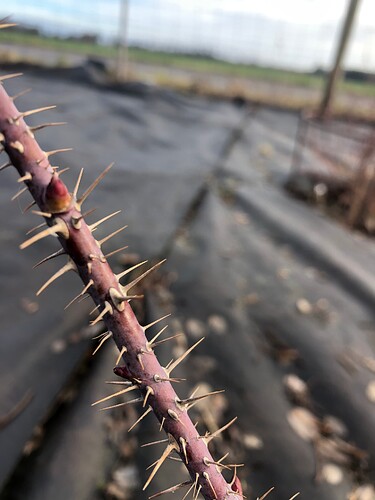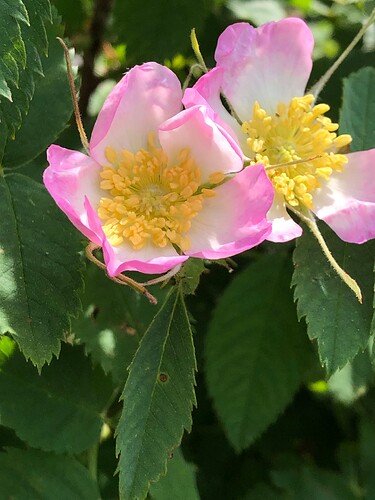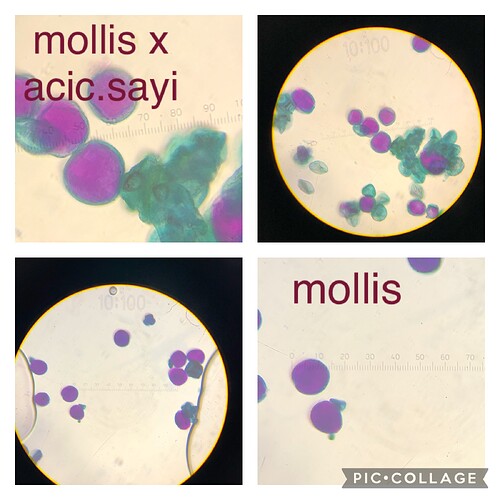mollis (2n=28) x acic. sayi (2n=42)
Description ( 2-year-old seedlings ): Foliage, spination identical to r.mollis. Flowering similar to r.acic. var. sayi.
The examined pollen ( mollis 14-16µm / mollis x acic. var sayi 16-20µm) shows that the hybrid has a polyploid pollen.
Considerations: Use of canina hybrid pollen in wetter cultivars? Which characteristics are inherited?
I am unsure as to what you are asking. I wanted to reply, but I need to know exactly what query I am replying to.
The question is whether there is any experience with canina as a pollen donor.
I have generations of experience in multiple caninae species.
It can be used in either direction successfully. However, due to its unusual nature, you need to plan direction of crosses depending on many variables in order to achieve what you desire. In the case of canina, pollen may be easier in the long run for tetraploids. However, as it is a HIGHLY variable species, using it for seed with a known tetraploid of even meiosis may result in more predictable pollen donor canina hybrid.
As I stated before, the caninae clan requires pre-planning, or one will end up in a fruitless mess. The very nature of the clan is one of randomness, and is among the most genetically variable of all rose clans.
In terms of diseases of moisture-related diseases, many species from the clan have a higher tolerance to lesser spot diseases, as well as wet winter-born diseases like canker. This has been shown in studies, and is my personal experience. However, as it is a highly variable species, selecting the right clone to start with is important. You can take 100 Rosa canina, and not all will have this trait. Many will and some will not.
My personal experience with the F1 generation is not discouraging. The flowers are interesting. I cannot say anything about the F2 generation as the seedlings have not yet flowered.
In the article I posted, the main message was that the pollen of the canina, which is generally haploid, can be modified by crossing to obtain polyploid forms. And hence the idea of using the pollen in further crosses.
Thank you for your answer!
If you have a paid account on HMF, you can look up any of my crosses (Michael Garhart) as a tutorial, as well as Rolf Sievers’ crosses. If you do not have a paid account then use the search term “Blush” to find most of his work, and the search term “Dog” and “Pine” to see the few few generations of mine. Unfortunately, I have not placed my Apple Rose hybrids on HMF as I find it exhausting to update HMF on obscure things.
Your tip to search the HMF under the keyword “Dog” was excellent. You have achieved remarkable results which encourage me to continue my crosses. This year I will try in already existing crosses the effect of repeated crosses of the same pollen variety (if you are interested you could have a look at my canina crosses in HMF - my name is Andreas Kalik).
I have known Mr. Sievers for many years and he is the person who has taught me a lot - a kind of mentor.


